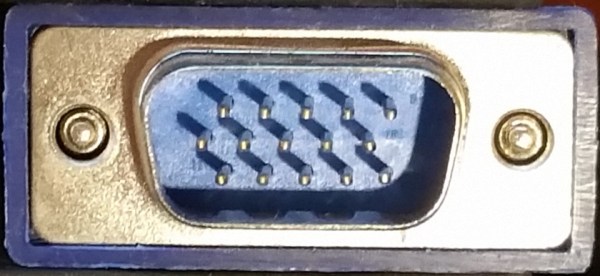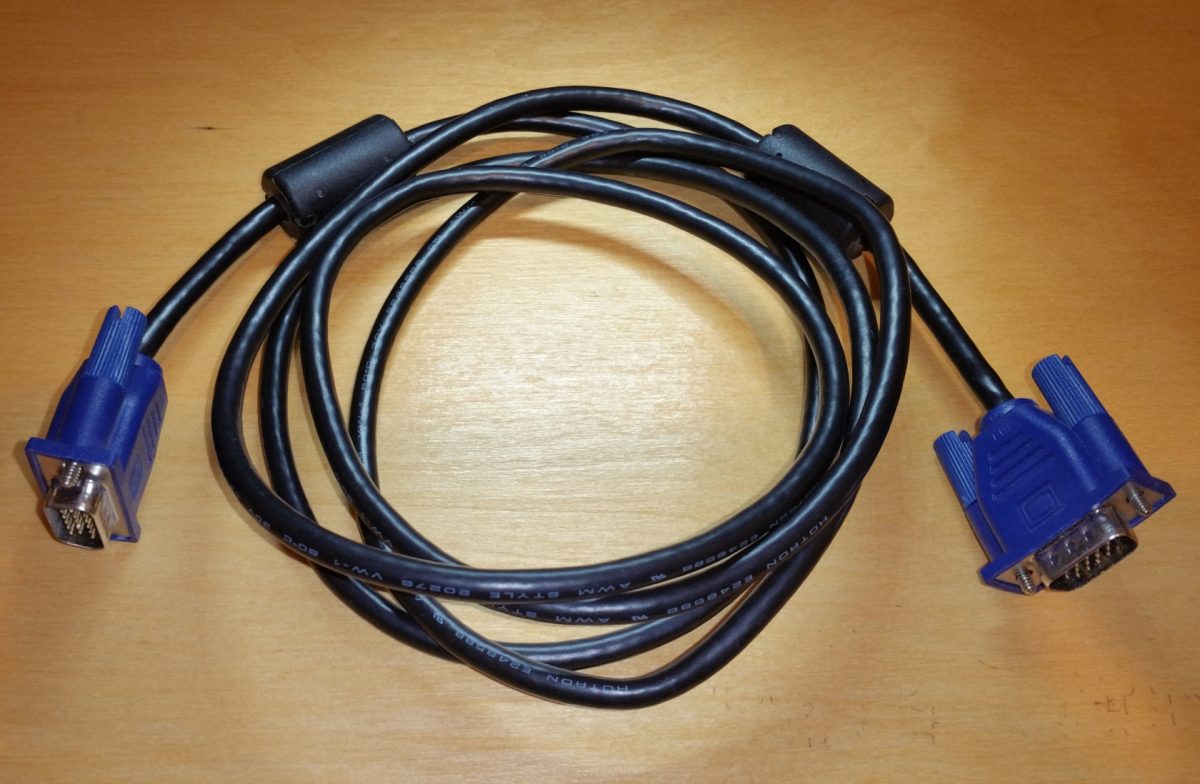Introduction
I wanted to know what the difference is between VGA cables with 14 pin and 15 “D” connectors. I found the answer on the Instructables site/forum. The info I needed was contained in a reply to a query by onrust circa 2010.
The Answer I Needed
Well I got my answer from “ganzieee” at “instructables”. It was delivered 2015 and it follows here.
The Purpose of D Connector Pin 9 on VGA Cables
I have seen this problem and question in various forms many times, and have never seen the correct answer given. So here is the answer. Please spread it around, since many people seem to have the problem:
VGA 15 pin cables often have only 14 active pins. Pin 9 is missing. (This missing pin is on the middle row of pins, one pin from the end.) This missing pin is a problem for flat screen TVs.
Pin 9 is required by most, if not all, plasma and lcd TV’s to supply back to the computer graphics card information about the available resolution of the monitor. Pin 9 carries a 5 volt signal to the DDC (display data channel). New computer monitors (LCD or CRT) do not seem to need this pin, and work fine without it — as a result the majority of VGA cables labeled as “15 pin” really only have 14 pins, and this is never explained or noted in the packaging or product specifications! The only way to tell if a “15 pin” VGA cable actually has all 15 pins is to look at the connector and count the pins. If the middle row has only 4 pins, then the critical pin 9 is missing.
From the posts I have seen — and from my own experience with my 50″ Pioneer PDP-5070HD plasma TV — nearly all flat screen TV’s DO NEED this pin to return information about the native screen resolution.
I have seen dozens of posts by people trying to set up their HTPC’s to work with their big screen plasma, but not being able to set the resolution (usually 1360 x 768) on their video adapter card. Some people on the forums argue they had “no problem” while others cannot make it work. People blame the video card or video card drivers. No one seems to figure out the problem is a missing pin on the supposedly standard “15 pin VGA cable” many people are using!
I had the same problem with my ATI 9800 Pro graphics card using a 15 pin VGA cable with only 14 pins. When I changed to a full and true 15 pin cable, the ATI 9800 immediately sensed the native resolution of the plasma TV.
So the difference between a 15 pin and a 14 pin VGA cable is not “just one pin”, as one sarcastic idiot answered to a previous post of this question. The absence of the pin 9 signal (5 volt to the DDC) means your very expensive plasma or LCD TV cannot notify your computer graphics card about its supported resolution. Get a VGA cable with all 15 pins, and your problem may be resolved. But you will have to search to find one by visually examining the plug. Remember, all the VGA cables are labeled and sold as “15 pin VGA cable” even if they actually have only 14 pins. Check it out.
(BTW, there is a reason to leave the 5 volt signal off the cable when it is not needed. However, for LCD and Plasma TV’s, it is needed.)
by Ganesh Azhagesan (ganzieee at instructables) circa 2015.
Comparing 14 Pin & 15 Pin D Connectors
14 Pin D Connector
Below is a photo of a 14 Pin “D” connector on the end of a VGA cable.
Note: it is just a 15 Pin “D” connector with Pin 9 missing. So for that pin there is no interconnection between the two ends of the cable.

15 Pin D Connector
Below is a photo of a 15 Pin “D” connector on the end of a VGA cable.
Note: All pins are present and are assumed to have interconnections between the two ends of the cable.



Leave a Reply